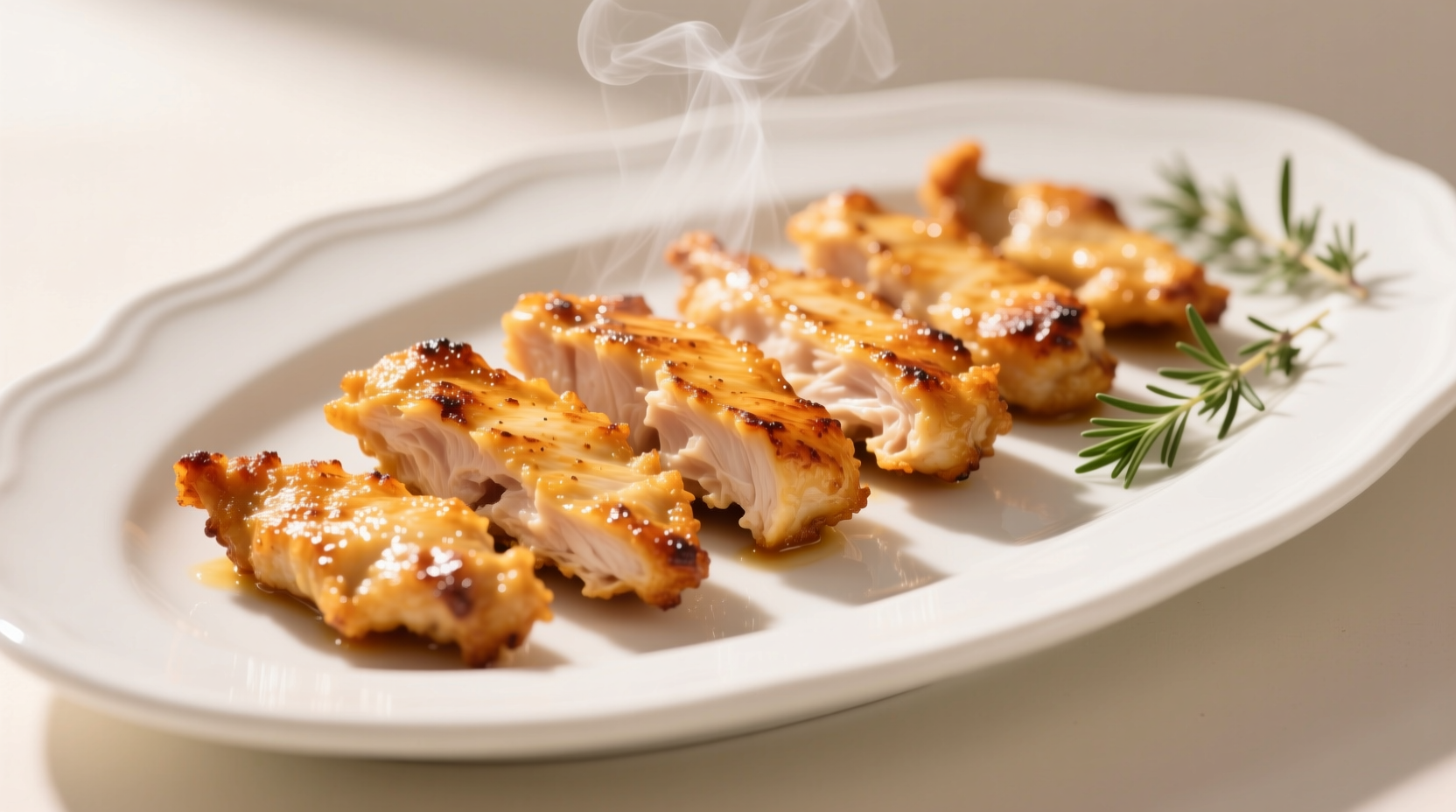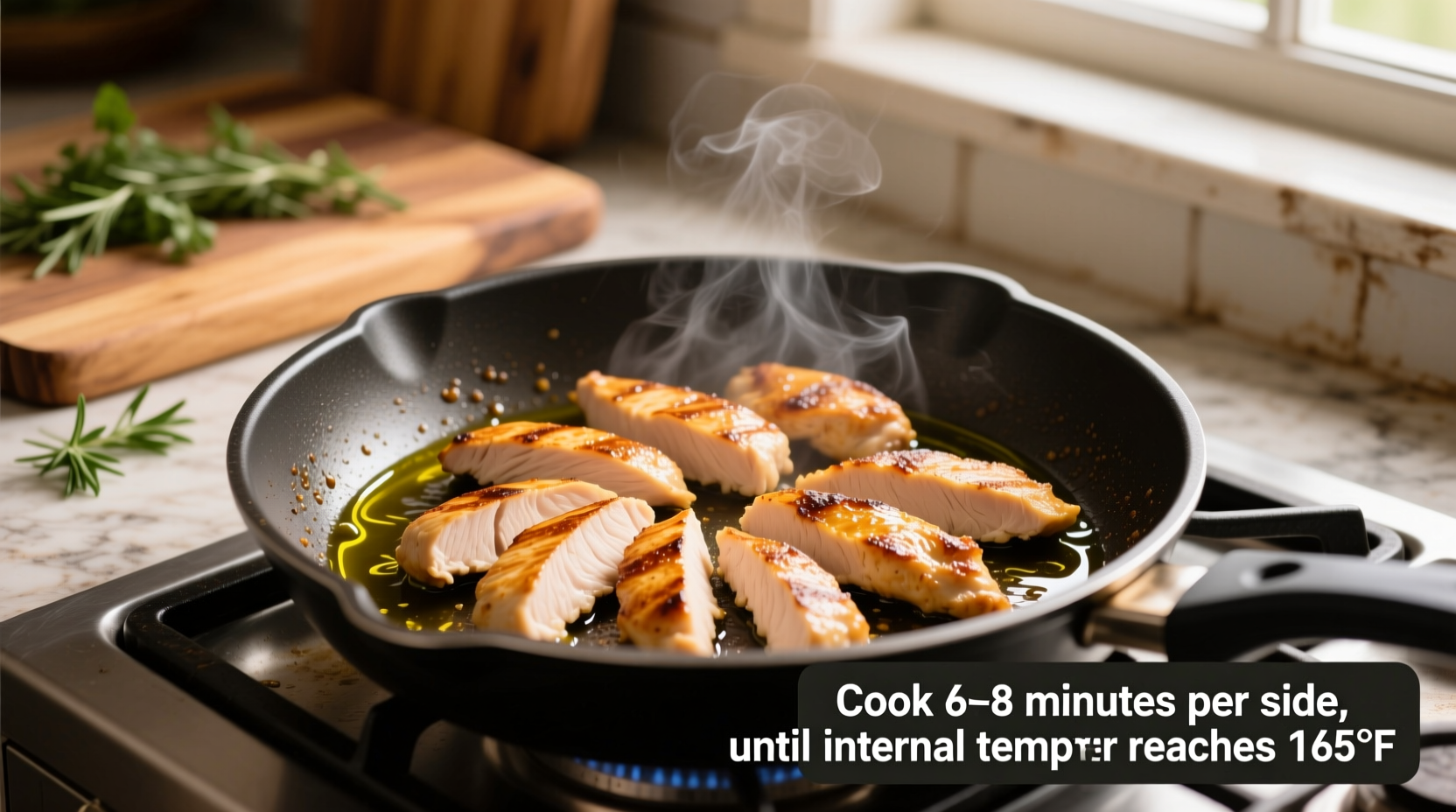Getting chicken strips perfectly cooked—crispy outside, juicy inside—requires precise timing and temperature control. Many home cooks struggle with undercooked or dry chicken strips because they rely solely on visual cues rather than understanding how cooking methods, thickness, and equipment variations affect results. This guide delivers scientifically backed timing for every cooking method, plus professional techniques to guarantee perfect chicken strips every time.
Why Cooking Time Matters for Chicken Strips
Chicken strips present a unique challenge: their thin profile cooks faster than larger cuts but requires precise timing to avoid drying out. According to USDA Food Safety and Inspection Service guidelines, all poultry must reach 165°F (74°C) internal temperature to eliminate harmful bacteria like salmonella. However, hitting this temperature without overcooking demands understanding both time and technique.
| Cooking Method | Recommended Time | Optimal Temperature | Internal Temp Check |
|---|---|---|---|
| Baking | 15-20 minutes | 400°F (204°C) | 165°F (74°C) |
| Air Frying | 10-12 minutes | 400°F (204°C) | 165°F (74°C) |
| Pan-Frying | 5-7 minutes per side | Medium-high heat | 165°F (74°C) |
| Deep Frying | 3-5 minutes | 350°F (177°C) | 165°F (74°C) |
Baking Chicken Strips: Oven Method
Baking provides the most consistent results for home cooks without specialized equipment. Preheat your oven to 400°F and line a baking sheet with parchment paper. Arrange strips in a single layer with space between them—crowding causes steaming instead of crisping.
For frozen chicken strips, add 3-5 minutes to cooking time. Fresh strips typically need 15-20 minutes, but thickness matters: 1-inch strips cook faster than thicker cuts. Flip halfway through for even browning. Always verify doneness with a meat thermometer inserted horizontally into the thickest part.
Air Frying Chicken Strips: Quick and Crispy
Air fryers circulate superheated air for restaurant-style crispiness with less oil. Preheat to 400°F, then arrange strips in a single layer without overlapping. Cook for 10-12 minutes, shaking the basket halfway through. For extra crispiness, spray lightly with oil before cooking.
Professional chefs recommend the "rest before serving" technique—let strips sit 2 minutes after cooking. This allows residual heat to finish cooking while redistributing juices, preventing dryness. The USDA confirms this method maintains safe temperatures while improving texture.

Pan-Frying Chicken Strips: Stovetop Success
Pan-frying delivers immediate crispiness but requires attention to heat control. Use a heavy-bottomed skillet over medium-high heat with 1-2 tablespoons of high-smoke-point oil (avocado or canola). Wait until oil shimmers before adding strips—this indicates proper temperature.
Cook for 5-7 minutes per side until golden brown. Thinner strips (under ¼ inch) may cook in 4 minutes per side. The "touch test" provides a secondary check: properly cooked chicken should feel firm but slightly springy. Always confirm with a thermometer, as visual cues alone can be misleading.
Deep Frying Chicken Strips: Restaurant Results at Home
For authentic crispy texture, deep frying works best but requires precise oil temperature control. Maintain oil at 350°F using a deep-fry thermometer. Submerge strips carefully and cook 3-5 minutes until golden. Overcrowding drops oil temperature, leading to greasy results.
Food scientists at the University of California Davis note that oil temperature stability is critical: each degree below 350°F increases oil absorption by 1.5%. This explains why under-temperature frying creates soggy, greasy chicken strips despite correct timing.
Factors That Change Cooking Time
Several variables affect how long to cook chicken strips:
- Thickness variation: Strips cut at ¼ inch cook 30% faster than ½ inch strips
- Starting temperature: Frozen strips add 25-30% to cooking time
- Oven accuracy: Home ovens often vary ±25°F from set temperature
- Coating type: Panko breadcrumbs brown faster than flour coatings
How to Verify Doneness Beyond Timing
Timing guidelines provide a starting point, but these verification methods ensure perfect results:
- Internal temperature: 165°F measured in thickest part (USDA requirement)
- Juice color: Clear juices, not pink
- Texture test: Firm but yielding to gentle pressure
- Cut test: White meat throughout with no translucent areas
Never rely solely on color or timing—the USDA emphasizes that visual indicators alone cannot guarantee safety. A $10 instant-read thermometer prevents foodborne illness while preserving juiciness.
Common Mistakes That Ruin Chicken Strips
Professional kitchens avoid these pitfalls that home cooks often encounter:
- Skipping the thermometer: Leads to undercooked or dry chicken
- Overcrowding the pan: Creates steam that prevents crispiness
- Flipping too early: Causes sticking and uneven browning
- Not resting after cooking: Releases juices when cut immediately
Storage and Reheating Guidelines
Properly stored cooked chicken strips last 3-4 days in the refrigerator. For best reheating results:
- Air fryer: 3-4 minutes at 375°F
- Oven: 8-10 minutes at 350°F
- Avoid microwave: Makes coating soggy
Never reheat chicken strips more than once. The Food Safety and Inspection Service warns that repeated temperature cycling promotes bacterial growth even if strips appear properly cooked.
Frequently Asked Questions
How long to cook chicken strips at 375 degrees?
Bake chicken strips at 375°F for 18-22 minutes, flipping halfway through. Check internal temperature reaches 165°F. Lower temperatures require longer cooking but reduce risk of over-browning before reaching safe temperature.
Can you overcook chicken strips?
Yes, overcooking chicken strips causes dry, tough meat. They become dry when cooked beyond 165°F internal temperature. The proteins continue to contract, squeezing out moisture. For best texture, remove strips at 160°F and let residual heat bring them to 165°F during resting.
How do you know when chicken strips are done without a thermometer?
Without a thermometer, check for clear juices when pierced, firm but springy texture when pressed, and white color throughout with no translucent areas. However, the USDA strongly recommends using a thermometer as visual indicators alone cannot guarantee safety from foodborne pathogens.
Should chicken strips be covered when baking?
No, chicken strips should never be covered when baking. Covering creates steam that prevents proper browning and crispiness. For maximum crispiness, bake uncovered on a wire rack placed over a baking sheet to allow air circulation around all sides.
How long do chicken strips take to cook from frozen?
Frozen chicken strips require 20-25 minutes when baking at 400°F, 12-15 minutes in an air fryer, or 7-9 minutes per side when pan-frying. Always add 25-30% to standard cooking times for frozen strips and verify internal temperature reaches 165°F.











 浙公网安备
33010002000092号
浙公网安备
33010002000092号 浙B2-20120091-4
浙B2-20120091-4